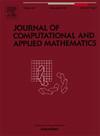Analysis of structured deep kernel networks
IF 2.6
2区 数学
Q1 MATHEMATICS, APPLIED
Journal of Computational and Applied Mathematics
Pub Date : 2025-09-15
DOI:10.1016/j.cam.2025.116975
引用次数: 0
Abstract
In this paper, we leverage a recent deep kernel representer theorem to connect kernel based learning and (deep) neural networks in order to understand their interplay. In particular, we show that the use of special types of kernels yields models reminiscent of neural networks that are founded in the same theoretical framework of classical kernel methods, while benefiting from the computational advantages of deep neural networks. Especially the introduced Structured Deep Kernel Networks (SDKNs) can be viewed as neural networks (NNs) with optimizable activation functions obeying a representer theorem. This link allows us to analyze also NNs within the framework of kernel networks. We prove analytic properties of the SDKNs which show their universal approximation properties in three different asymptotic regimes of unbounded number of centers, width and depth. Especially in the case of unbounded depth, more accurate constructions can be achieved using fewer layers compared to corresponding constructions for ReLU neural networks. This is made possible by leveraging properties of kernel approximation.
结构化深度核网络分析
在本文中,我们利用最近的深度核表征定理来连接基于核的学习和(深度)神经网络,以了解它们的相互作用。特别是,我们表明,使用特殊类型的核产生的模型让人想起神经网络,这些模型是在经典核方法的相同理论框架中建立的,同时受益于深度神经网络的计算优势。特别是所介绍的结构化深度核网络(SDKNs)可以看作是具有可优化激活函数的神经网络(NNs),它遵循一个表征定理。这个链接也允许我们在内核网络的框架内分析神经网络。我们证明了sdkn的解析性质,证明了它们在三种不同的无界中心数、宽度和深度渐近区域具有普遍逼近性质。特别是在深度无界的情况下,与ReLU神经网络的相应构造相比,使用更少的层数可以实现更精确的构造。这可以通过利用核近似的性质来实现。
本文章由计算机程序翻译,如有差异,请以英文原文为准。
求助全文
约1分钟内获得全文
求助全文
来源期刊
CiteScore
5.40
自引率
4.20%
发文量
437
审稿时长
3.0 months
期刊介绍:
The Journal of Computational and Applied Mathematics publishes original papers of high scientific value in all areas of computational and applied mathematics. The main interest of the Journal is in papers that describe and analyze new computational techniques for solving scientific or engineering problems. Also the improved analysis, including the effectiveness and applicability, of existing methods and algorithms is of importance. The computational efficiency (e.g. the convergence, stability, accuracy, ...) should be proved and illustrated by nontrivial numerical examples. Papers describing only variants of existing methods, without adding significant new computational properties are not of interest.
The audience consists of: applied mathematicians, numerical analysts, computational scientists and engineers.

 求助内容:
求助内容: 应助结果提醒方式:
应助结果提醒方式:


